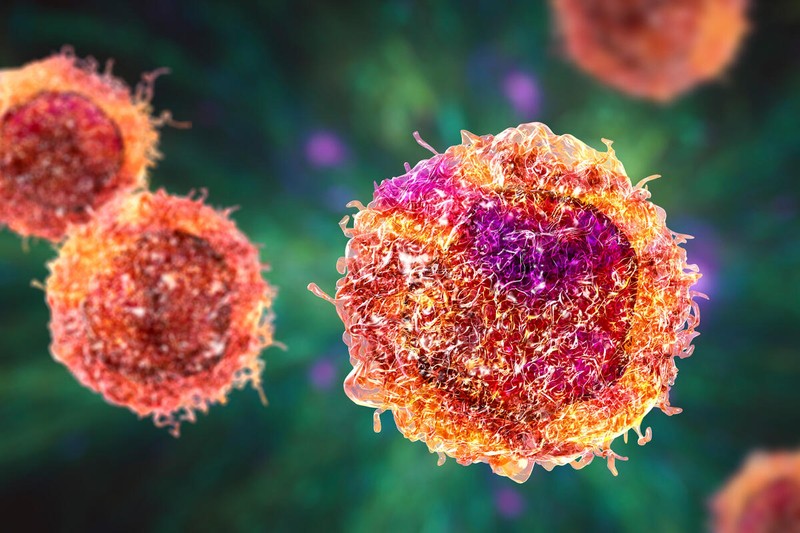
MSK’s Global Biomarker Development Program aims to accelerate the development and approval of biomarker assays and technologies.
Memorial Sloan Kettering Cancer Center’s Global Biomarker Development Program (BDP) is a translational research program that aims to accelerate the development and approval of biomarker assays and technologies. These rapidly evolving tools, which can be used for a range of cancer types, enable more informed medical decision-making. They also allow clinicians to take great strides forward in addressing obstacles to optimized patient care, including late diagnosis of disease, inability to select the best treatment for each individual patient’s tumor, and delays in translating therapeutic innovations from the laboratory (bench) to clinical practice (bedside).
To address these challenges, the BDP plans to effectively change the paradigm of collaborative biomarker development. Our approach is to treat the development of a biomarker the same way we do the development of a drug, which requires that each device or assay is “fit for the purpose” in which it will be studied, followed by the sequence of clinical trials to support and justify regulatory approvals and coverage by third-party payers. These steps are essential to ensure that the biomarker test can be used in routine practice.
In the era of precision medicine, where decisions to improve patient outcomes are based on the biologic profile of an individual patient’s tumor, the BDP is creating novel solutions for the complex challenges of assay development.
What is a liquid biopsy?
Biopsies are performed to confirm or rule out cancer. They also can provide information about the cancer type, which can help to determine a treatment plan. With a traditional tissue biopsy, healthcare professionals take out a small amount of tissue from a suspicious tumor mass and examine it. This procedure is the gold standard for cancer diagnosis; however, obtaining tumor tissue is sometimes very difficult.
In contrast to tissue biopsy, a liquid biopsy is an innovative test done on a sample of body fluid. Liquid biopsies can detect cancer cells, cancer DNA, and other materials that may be shed by the cancer. These tests, which are less invasive and more easily repeatable than tissue biopsies, are an emerging technology that can change clinical practice in oncology.
Most commonly, a liquid biopsy requires a blood draw, similar to what is done for other kinds of blood tests. Liquid biopsies recently have been expanded to employ other body fluids, such as urine, pleural effusion (fluid from the lungs), and cerebrospinal fluid.
What are cfDNA, ctDNA, and CTCs?
All cells contain DNA in the nucleus, and when cells die they release broken-down DNA into the bloodstream. These DNA fragments are called cell-free DNA (cfDNA). In a person with cancer, the blood may contain small pieces of DNA originating from tumor cells — called circulating tumor DNA (ctDNA).
Recent advances in sequencing technology have made it possible to detect tumor-derived mutations in the ctDNA from a liquid biopsy sample. Many genomic characteristics of cancer, such as copy number variations, structural rearrangements, and methylation patterns, can be found.
Circulating tumor cells (CTCs) are whole cancer cells shed by a tumor, which circulate through the bloodstream. These cells can be analyzed based on their size, shape, and molecular characteristics. Liquid biopsy tests that examine blood samples usually rely on ctDNA and CTCs.
What are the advantages of liquid biopsy?
Liquid biopsies allow doctors to detect and analyze cancer with a minimally invasive procedure. Simple collection procedures ensure low risk to patients and provide the opportunity for serial or repeated testing.
Liquid biopsies fill several roles in cancer care:
- Diagnosing cancer
- Monitoring treatment response
- Tracking the genomic changes of cancer over time
- Planning cancer treatment
Liquid biopsies can help with cancer diagnosis, especially for patients unable to have a tissue biopsy. These tests also may better capture the entire landscape of cancer-causing alterations found across all tumor sites, rather than analyzing the characteristics of only a portion of the tumor that’s been obtained through a traditional biopsy.
One of the most active applications of liquid biopsy is monitoring how people with cancer are responding to treatment, including whether any tumor remains after treatment has been completed (called minimal residual disease, or MRD).
Numerous studies across different cancer types indicate that ctDNA-based MRD detection predicts recurrence with high sensitivity and specificity. In this setting, results from the liquid biopsy are presented as positive or negative: A positive result indicates that the patient has a residual tumor. Liquid biopsy samples can also be analyzed quantitatively to estimate the tumor burden and treatment response in patients with metastatic disease.
Cancer often changes in response to treatment, including developing resistant mechanisms against therapy. It’s important to detect these changes, especially clinically important alterations, as early as possible. Liquid biopsy testing allows doctors to track a cancer’s changes because it can be performed serially at multiple timepoints, and it analyzes cancer products containing genomic information.
Additionally, liquid biopsy can help guide clinical decisions about cancer treatment. For people with early-stage who have received curative-intent treatment, serial liquid biopsies can be performed to monitor disease recurrence, which may be detectable months sooner than it would be with a traditional scan. If a patient has a result that suggests the presence of MRD, oncologists can initiate anticancer therapy.
Furthermore, oncologists can identify patients who will benefit from more or less aggressive treatment and adjust the treatment duration based on liquid biopsy test results. For patients having ongoing treatment, early detection of drug resistance by liquid biopsy allows timely change of the treatment plan. This can prevent the spread of treatment-resistant cancer cells. Numerous clinical trials that include liquid biopsy testing in their protocols to enhance the treatment outcome are under way at MSK and elsewhere.
What are the goals of the Global Biomarker Development Program?
The Global Biomarker Development Program is focused on developing better liquid biopsy tests, including improving current assays that employ ctDNA or CTCs. Medical oncologists, radiation oncologists, surgeons, radiologists, pathologists, geneticists, and computational biologists are all working together and actively collaborating with companies to tackle biological and technological challenges. The program’s leadership aims to improve clinical care for cancer patients through enhanced liquid biopsy-based biomarkers.


